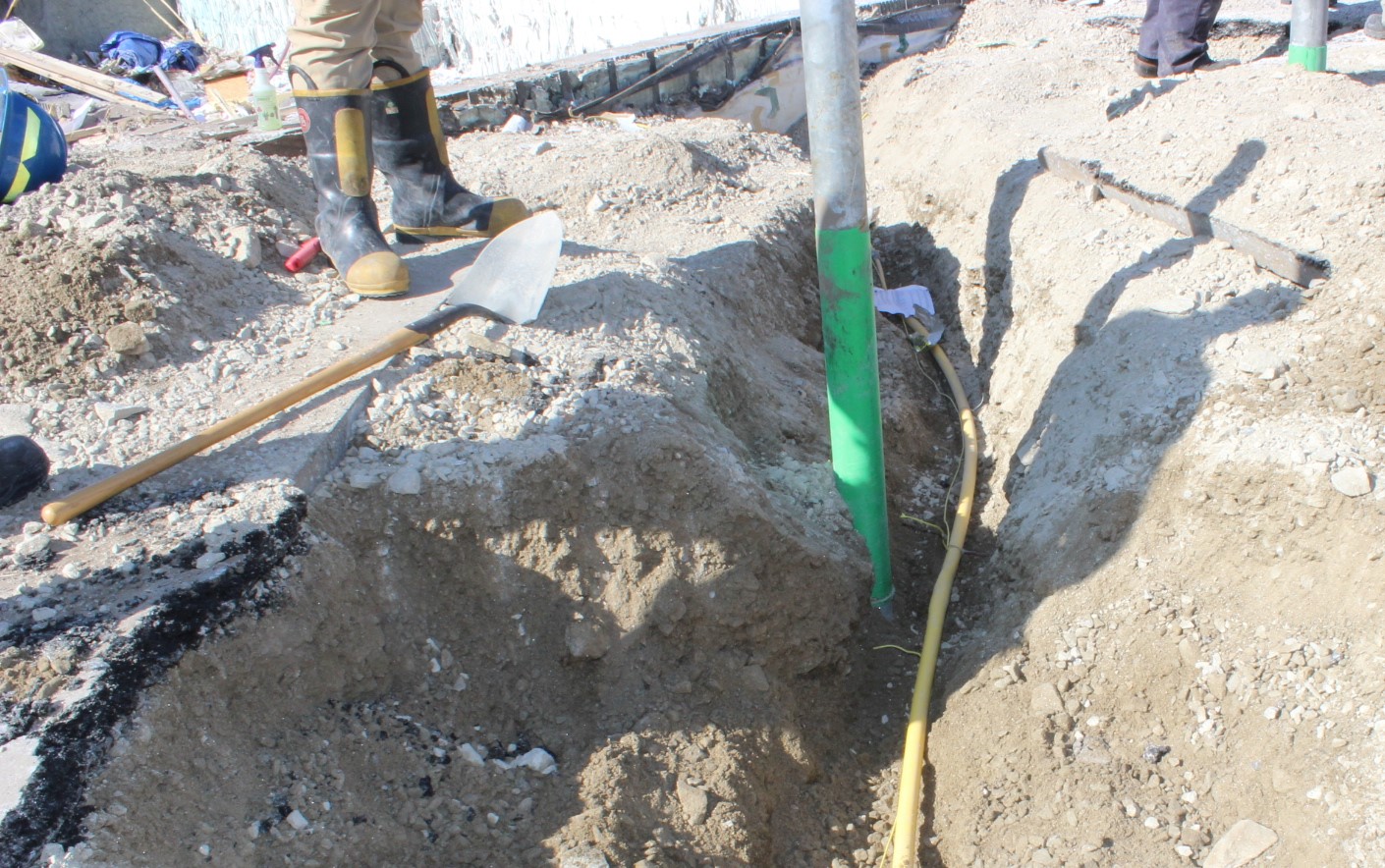
AUGUSTA – Liquefied propane gas lines are now included in the state’s Dig Safe laws after Governor Janet Mills signed the emergency bill last week.
The bill had been submitted by Rep. Seth Berry (D-Bowdoinham), the chair of the Legislature’s Energy, Utilities and Technology Committee, submitted LD 1892 in response to the explosion that occurred at the LEAP Inc. building in Farmington on Sept. 16, 2019. The bill adds liquefied propane gas distribution systems with underground pipes to the state’s Dig Safe laws, which prohibit digging around some lines and mandate excavators report planned projects.
The bill was cosponsored by local legislators Rep. Scott Landry (D – Farmington) and Sen. Russell Black (R – Wilton). It also had the support of Danielle Bell Flannery, daughter of Capt. Michael Bell, who testified earlier this year before the Maine Legislature’s Joint Standing Committee on Energy, Utilities and Technology in favor of LD 1892. Bell, a member of a Farmington Fire Rescue, was killed in the explosion.
State Fire Marshal Office investigators later said that the auger head of a bollard, sunk to protect an air conditioner unit, had cut the buried LP fuel line, resulting in propane entering the office building.
While previous versions of the bill had failed in earlier sessions of the Legislature, LD 1892 was passed unanimously by the House and Senate earlier in March. With Mills’ signature on Tuesday, it takes effect immediately.





Just wondering.
Since installers are not public utilities with a defined geography, how will the folks at DigSafe know which installer to notify? Will they notify them all, and will all of them be required to come to the site and insert a flag? How will the homeowner know when all the installers have flagged? Is Digsafe going to give them a list of 37 installers and the homeowner has to wait until all 37 installers leave a flag? What if an installer doesn’t have records dating back in time and simply doesn’t know if they’ve installed a line on a subject property? Are they liable? If an installer comes up from Portland to install a tank and line, how will DigSafe know to contact them if the homeowner wants to break the ground? What about installers that have retired or moved to Florida? Will they have to come up out of retirement every time a prior customer calls DigSafe?
And the $64 question, what about the towns that don’t participate in the DigSafe program?
Something tells me this isn’t going to work effectively through DigSafe and this will result in more regulation, forms, hassle, cost, and frustration as the local code enforcement officer will eventually get tasked with policing this. No offense to Mr. Kaiser, I know him, great guy, and he works well with us, but I can’t even get a drawing of my 20 year old septic system at the town office. Hard to police underground installations when you don’t even know where the installations are.
Don’t disagree that some change and new oversight is warranted given what happened, but I question DigSafe as the appropriate avenue to make needed change.
There’s more than one company out there that does that type of work Dig Safe is not the only company we used to use Dig Safe up at Sugarloaf, but they was so inaccurate we got another company to come in there when they have their load meter they will put the flags in the ground to let us know where power, gas, cable, just about anything in that ground but they also have a 3-foot variants so when they mark it on the ground that means there 3-foot on one side of that mark and 3ft on the other side that mark,
Ftowner,
Since you tried your best to shoot this full of holes but offered absolutely no other solution,
I have a question for you.
What harm does it do?
It forces improvements into the conversation.
It harasses the reckless cowboy contractors.
That can only be a good thing.
Not exactly a good thing. We’ll wait and see. I see many problems with this law.
Well, we certainly had ‘a problem without this law!! Would someone explain to me why buildings that are open and available to the public are not being required to have propane monitors. As best I understand, they are not expensive. As a matter of safety, we all have smoke alarms. Some of us who use propane for heating purposes opt for carbon monoxide detectors as a safety measure. Am I off base to believe that a propane monitor in the basement of the Leap building would have raised an alarm very early on and perhaps saved all the horror and misery that ensued? I suppose such a requirement would scream ‘government interference’ to some…… But would someone explain to me why this is not feasible?? Thanks.
@Private Planet
They used permanent line markers (Yellow metal stakes) where I used to live in Georgia. They had a round head on them the size of a silver dollar that had a warning printed on them. I assume the stakes were installed when the lines were put in. Same thing you get with digsafe, but permanent.
Folks commenting may find it helpful to know that prior to 2011, underground propane lines were included under Dig Safe. Buried lines are typically marked for easier detection later on.
Also, some tanks in Maine are 20 times larger than the LEAP facility’s was. Think about that.
FMI on Dig Safe, visit digsafe.com